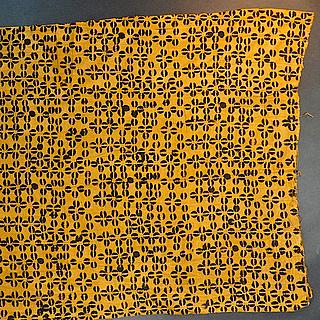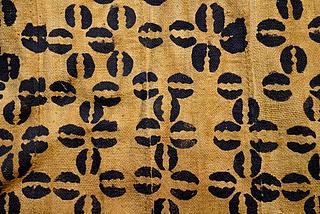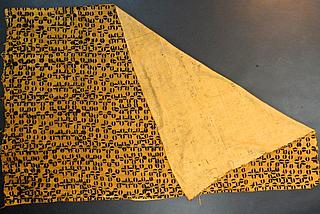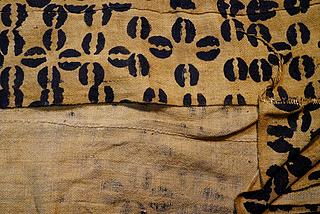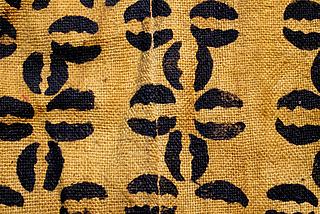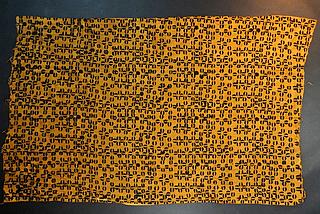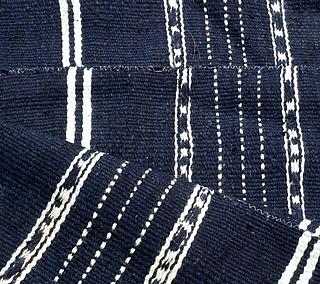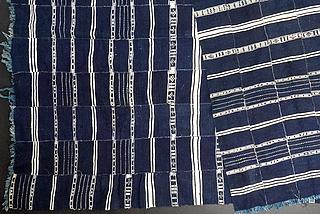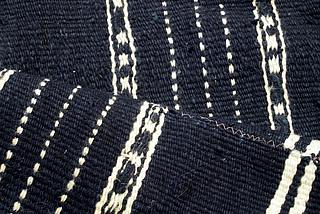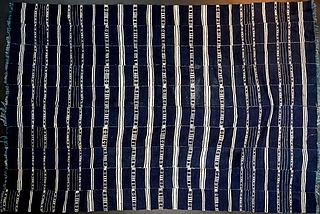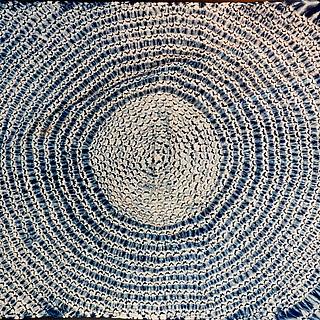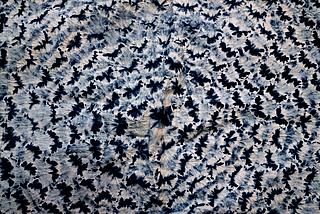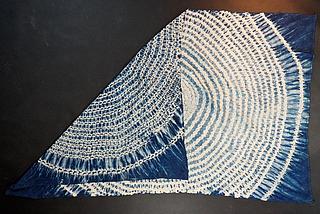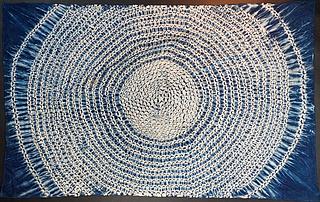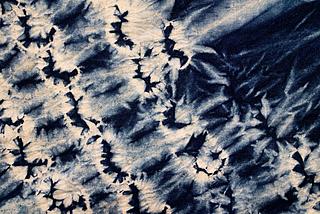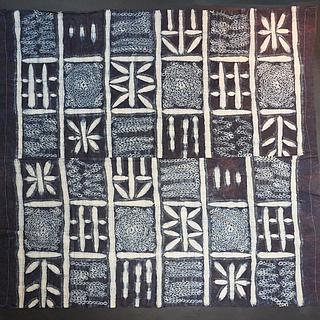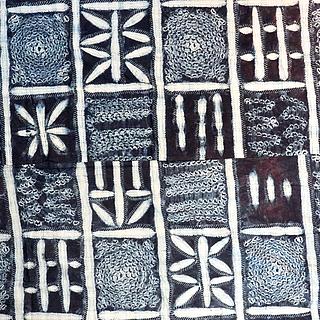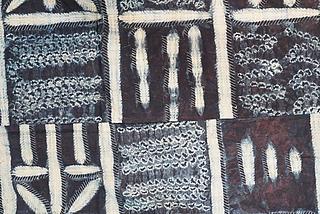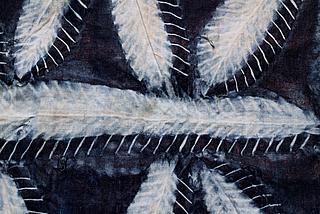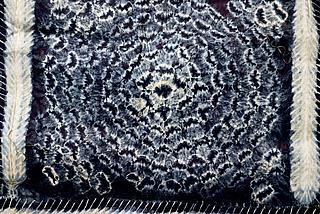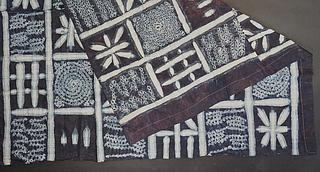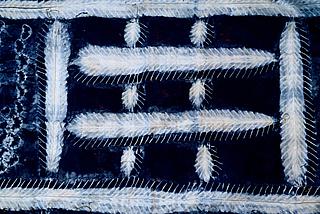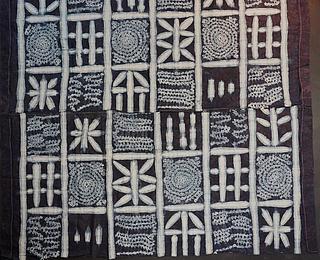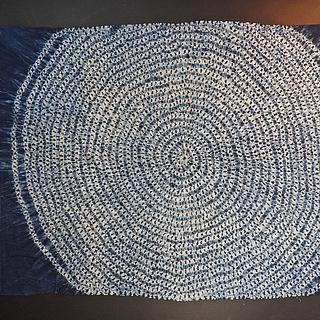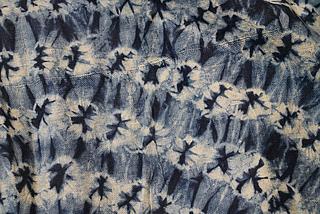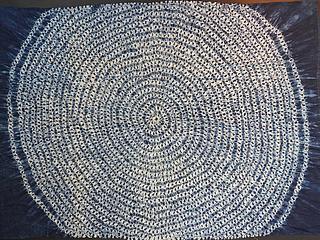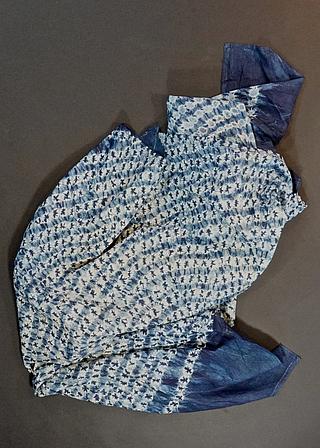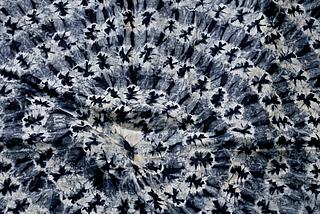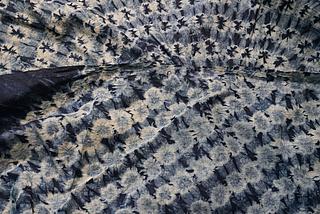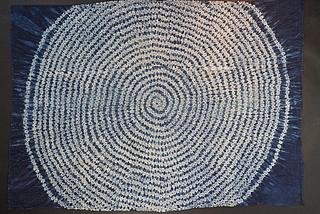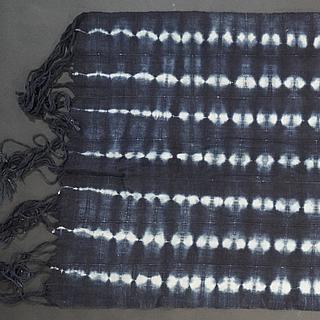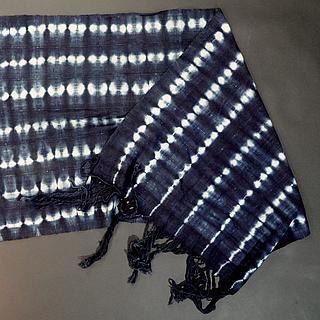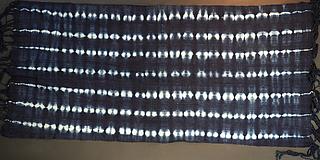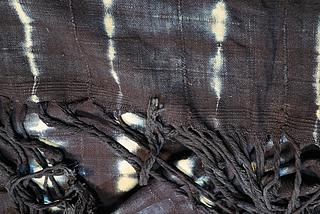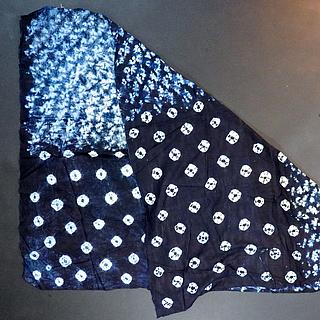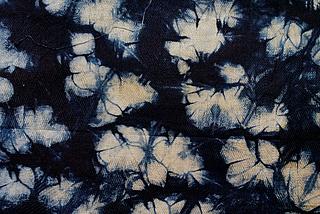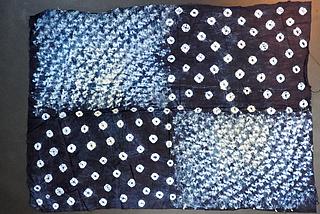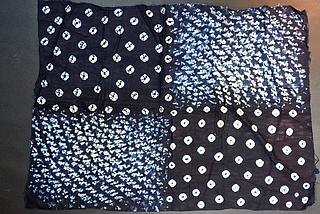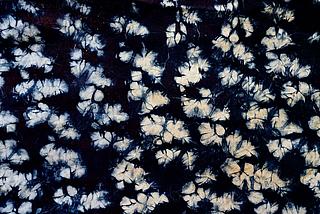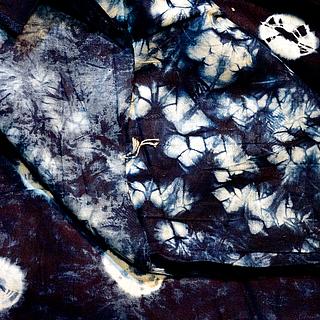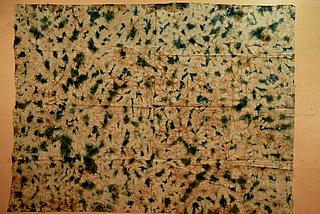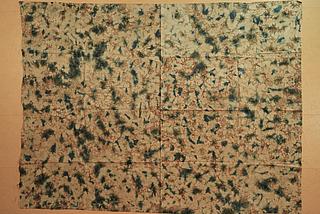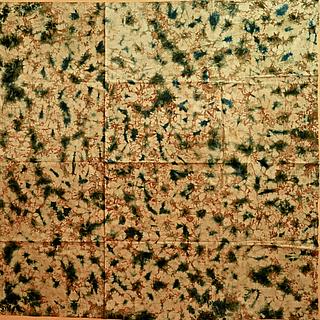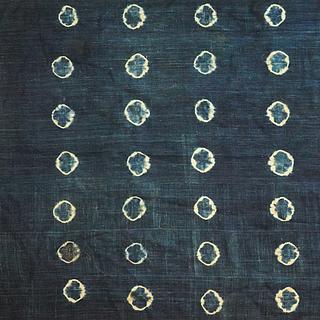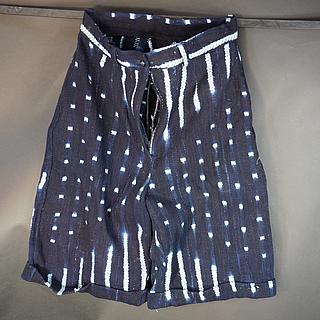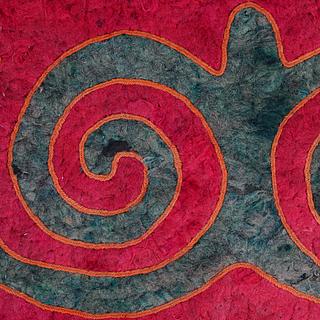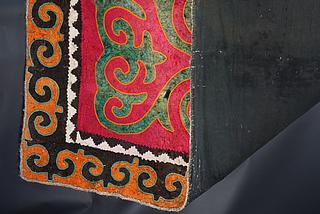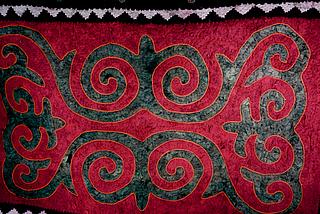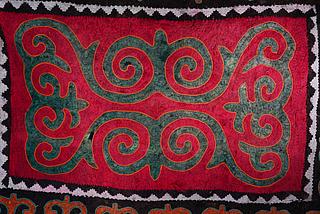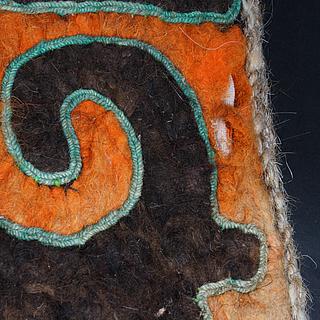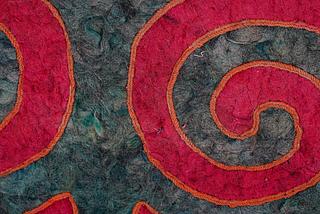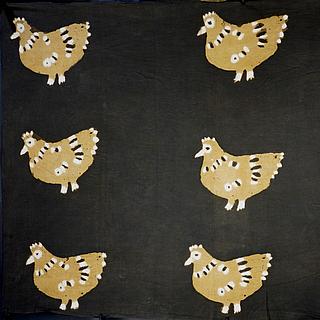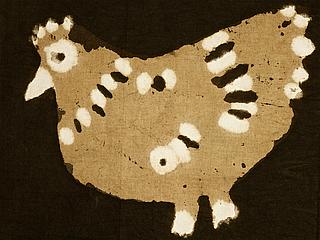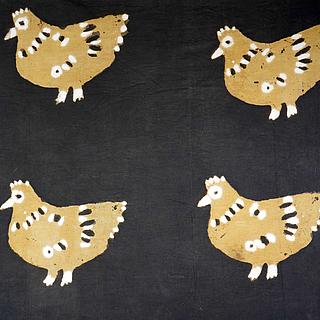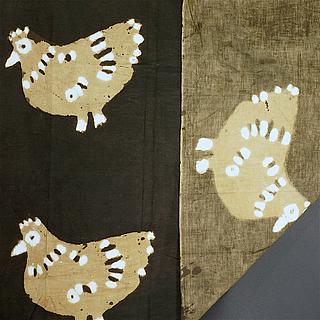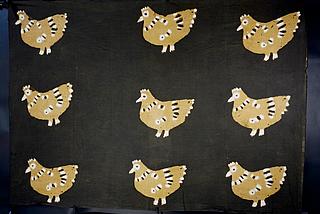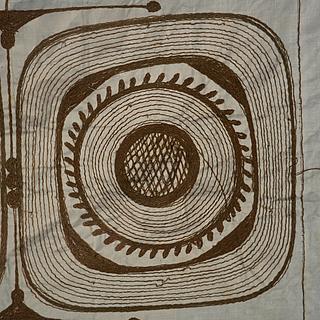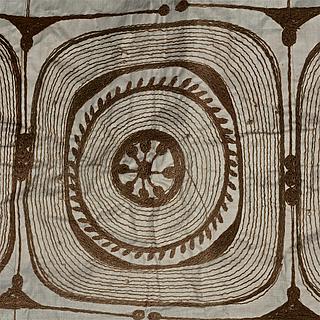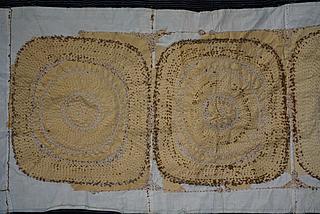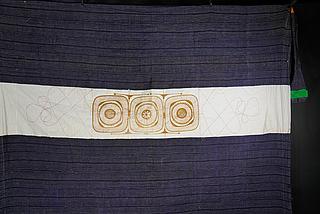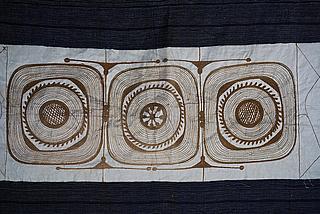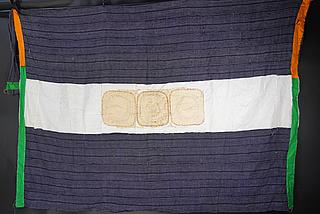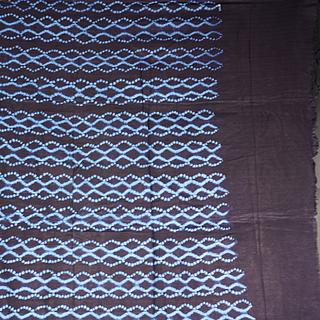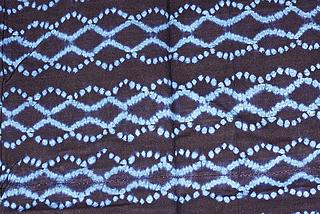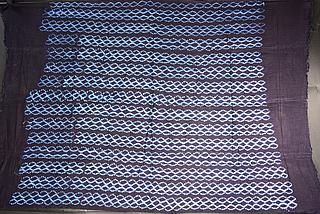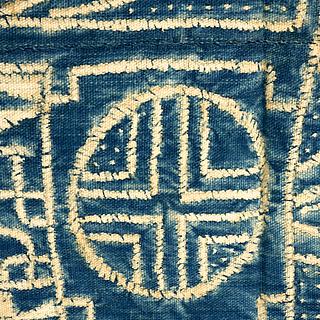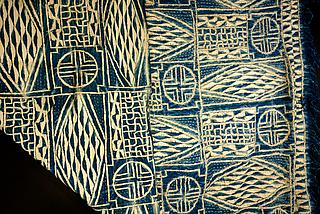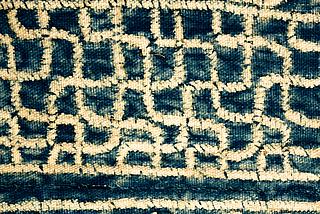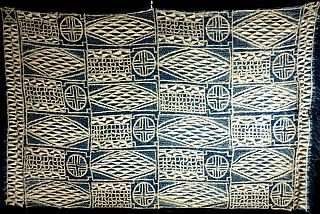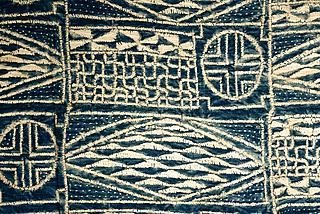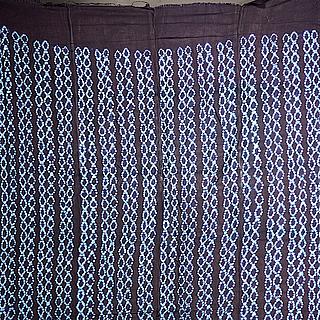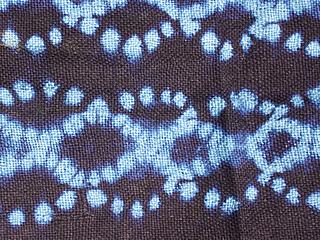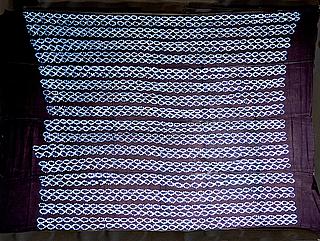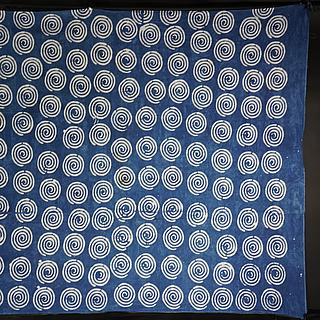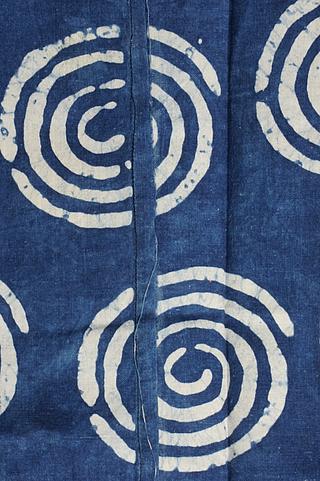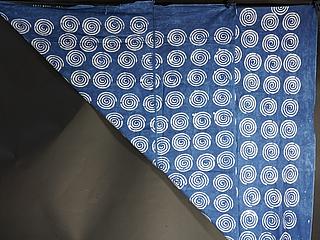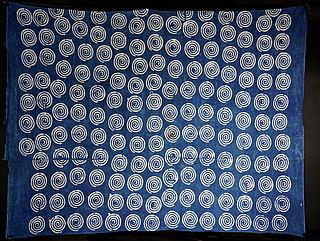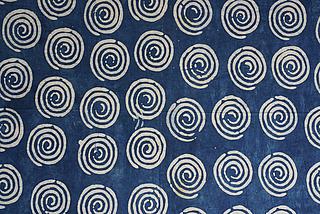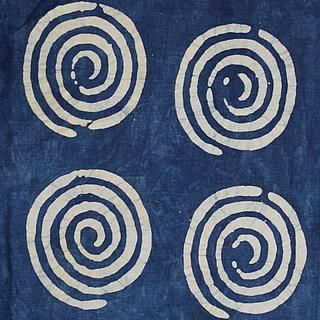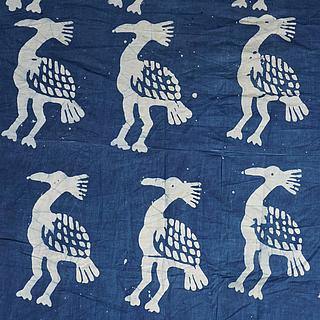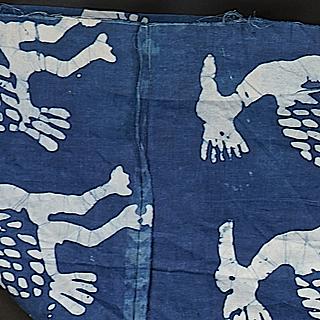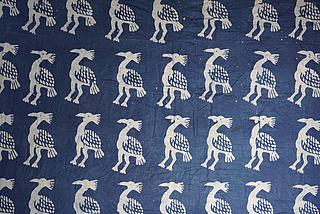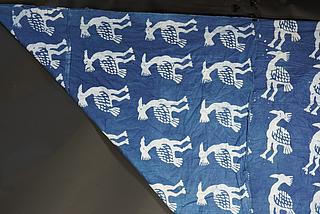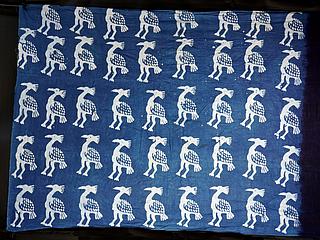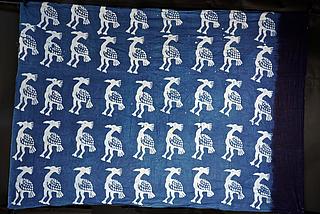Head ornaments worn by women from Tchad and Libya suspended on either side of the face by wool or leather that went over the head and balanced the pair under the ears. Loop closing. Early/mid-20th century. Also make nice bracelets:
A) Silver alloy with punched circular decoration. 50 grams. 8 cm diameter.
B) Silver alloy with punched circular decoration. 49 grams. 7.6 cm diameter.
C) Silver alloy with punched circular decoration. 45 grams. 7 cm diameter.
AFRICAN TEXTILES 10 / Dyes - Tie & Dye, Wax Resist etc. 10.02 Your search result
Sorting
Refine your search

Reference
Category
Origin
Material
Quality
Our collection consist mostly of Idigo dyes.Several primary resist techniques exists
Onikan: this process involves tying...read more
Our collection consist mostly of Idigo dyes.Several primary resist techniques exists
Onikan: this process involves tying raffia around hundreds of individual corn kernels or pebbles to produce small white circles on a blue background. The fabric can also be twisted and tied on itself or folded into stripes.
Alabere: Stitching raffia onto the fabric in a pattern prior to dyeing. The raffia palm is stripped, and the spine sewn into the fabric. After dyeing the raffia is usually ripped out, although some choose to leave it in and let wear and tear on the garment slowly reveal the design.
Eleko: Resist dyeing with cassava paste painted onto the fabric. Traditionally done with different size chicken feathers, calabash carved into different designs are also used,
Block printing: or metal stencils cut from the sheets. (see category 09)
Indigo dye is extracted from the leaves of the 'elu' (lonchocarpus cyanescens) vine, pounding them into a pulp and forming fist-sized balls of dyestuff. These are then mixed with a mordant (a metallic salt that acts as a dye fixative) extracted from ash
read lessLovely hand woven Adinkra stamped cloth10.01.1817
- Cotton
- Collectible (fine or rare example of an object)
- Excellent overall condition
- Functional household item
- Fabrics for fashion design
Eleven cotton strips, woven on a narrow loom and then sewn together. A lovely cotton fabric. It was then dyed to get a deep yellow-mustard- colour on black wich motifs stamped on it.
Strip woven indigo blanket10.01.1813
- Cotton
- Collectible (fine or rare example of an object)
- Functional household item
- Good overall conditions (small imperfections or signs of use)
Stripweaves are woven on a narrow loom and then sewing several widths together to form large rectangular wraps. Woollen blankets are woven by the Fulani and Songhai tribes. Collected around 1978 in Niger.
Tie and dye wrap from Nigeria10.02.1812
- Cotton
- Collectible (fine or rare example of an object)
- Excellent overall condition
- Fabrics for fashion design
This adire oniko (means tied resist) has been bought mid 1970 th ion a market in Benin or Nigeria. Beans, grains or small stones are inserted in the ties to fill them out and then tied with a raphia or cotton thread. The area that is bound will not be dyed.
Adire Alabere wrap from Nigeria10.02.1811
- Cotton
- Museum quality (worthy to be added to a museum’s permanent collection)
- High aesthetic value
- Excellent overall condition
An Adire alabere stitch resist combined with tie dye from Nigeria. A unique and rare fabric, collected around 1978 in Nigeria. A similar iem is found in the Brooklyn Museum under ACCESSION NUMBER 1990.132.9
A beautiful adire oniko wrap10.02.1810
- Cotton
- Museum quality (worthy to be added to a museum’s permanent collection)
- High aesthetic value
- Good overall conditions (small imperfections or signs of use)
- Fabrics for fashion design
A beautiful adire oniko (tied resist) fabric bought around 1975 in Benin (maybe Nigeria). Beans, grains or small stones are inserted in the ties to fill them out and then tied with a raphia or cotton thread. The area that is bound will not be dyed. An exceptional and rare item of such quality and age.
Dark blue indigo hand woven wrap10.02.1809
- Cotton
- Excellent overall condition
- Fabrics for fashion design
- Functional household item
- New never used
Seven hand woven cotton strips tie-dyed to creating white dots on deep blue indigo background
Tie and dye indigo wrap10.02.1814
- Cotton
- Fabrics for fashion design
- Excellent overall condition
Indusrial cotton fabric tie and dyed.
Hand dyed African cloth10.02.1775
- Cotton
- Fabrics for fashion design
- Good overall conditions (small imperfections or signs of use)
- Excellent overall condition
- New never used
A hand dyed wrap on a indusrial cotton
Tie and dye Indigo cloth -Benin10.02.1773
- Cotton
- Collectible (fine or rare example of an object)
- Excellent overall condition
- Fabrics for fashion design
- Functional household item
The cotton strips, sewn together are hand woven on a narrow loom. Dyed with natural indigo and patterned by the technique of resist dyeing. An ancient piece of traditional African textile art.
Indigo strip woven short10.05.2096
- Cotton
- New never used
Indigo fabric with embroidery10.05.2065
- Cotton
- Collectible (fine or rare example of an object)
- Fabrics for fashion design
- Good overall conditions (small imperfections or signs of use)
Adire alabere - indigo cloth10.02.2063
- Cotton
- Excellent overall condition
- Fabrics for fashion design
- High aesthetic value
- New never used
This is a stiched resist and dyed in probably synthetic indigo cloth. The base is an industrial cotton fabric.
Old Bamoun Indigo fabric10.02.2062
- Cotton
- Museum quality (worthy to be added to a museum’s permanent collection)
- Good overall conditions (small imperfections or signs of use)
- High aesthetic value
- Antiques (object shows signs of long use)
Indigo fabric probably Bamoun (Cameroon). Weaving of local cotton on large loom (quite rare), the patterns are obtained by embroidery, removed after dyeing. This mid 20th century fabric is a unique piece not to be missed in a collection of African textiles.
10.02.2060
- Cotton
- Fabric in good condition a few small imperfections (holes)
- Fabrics for fashion design

